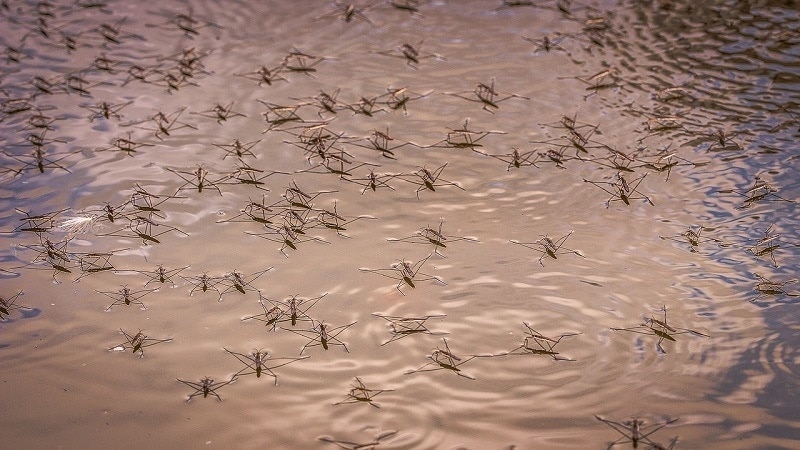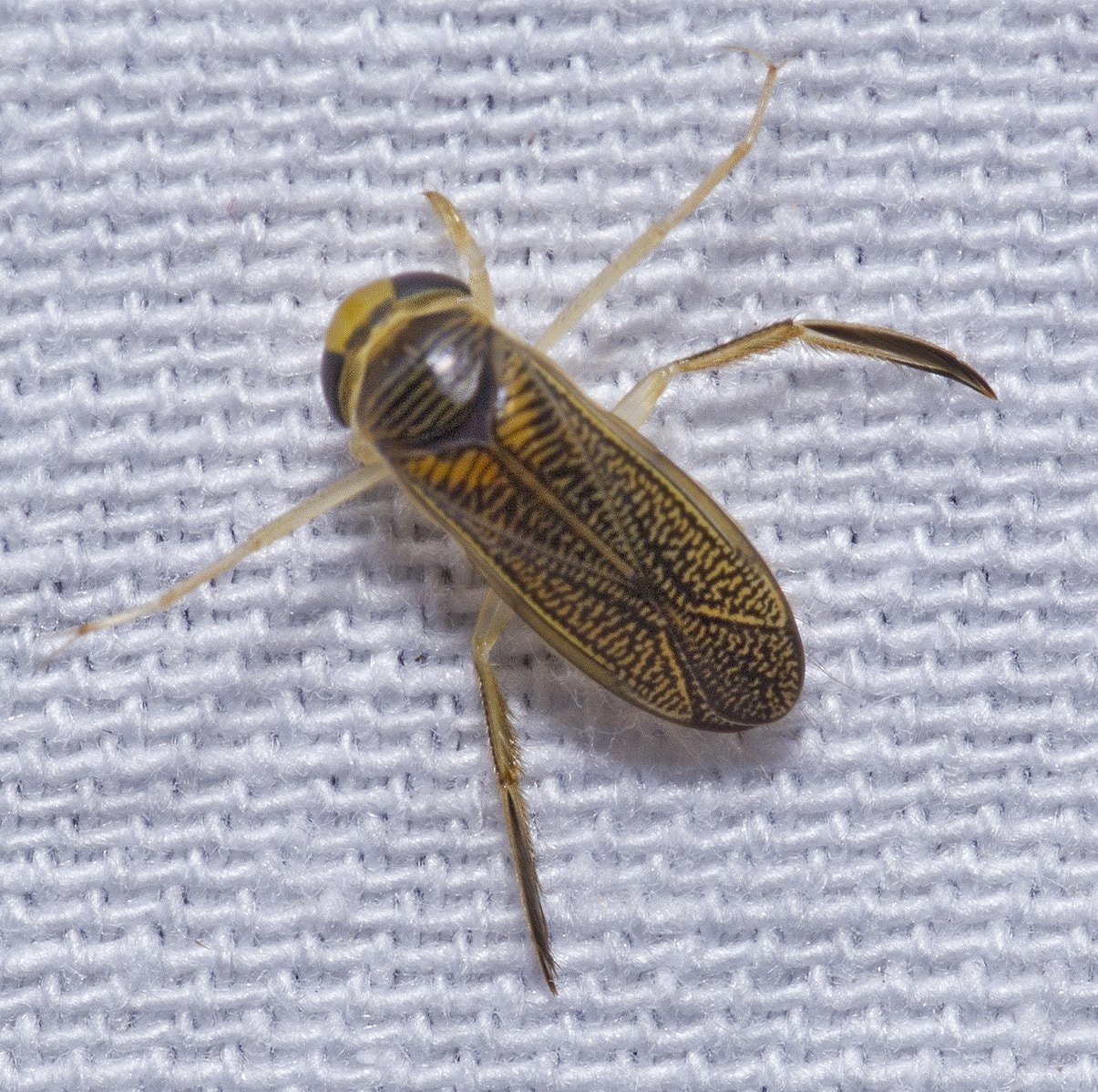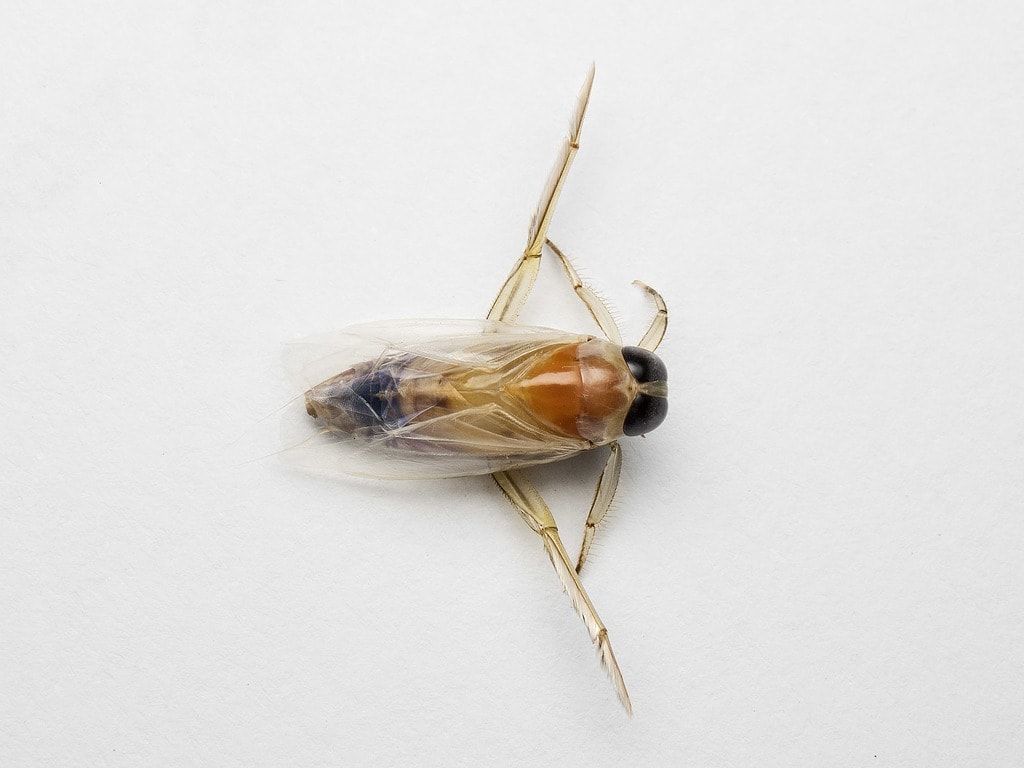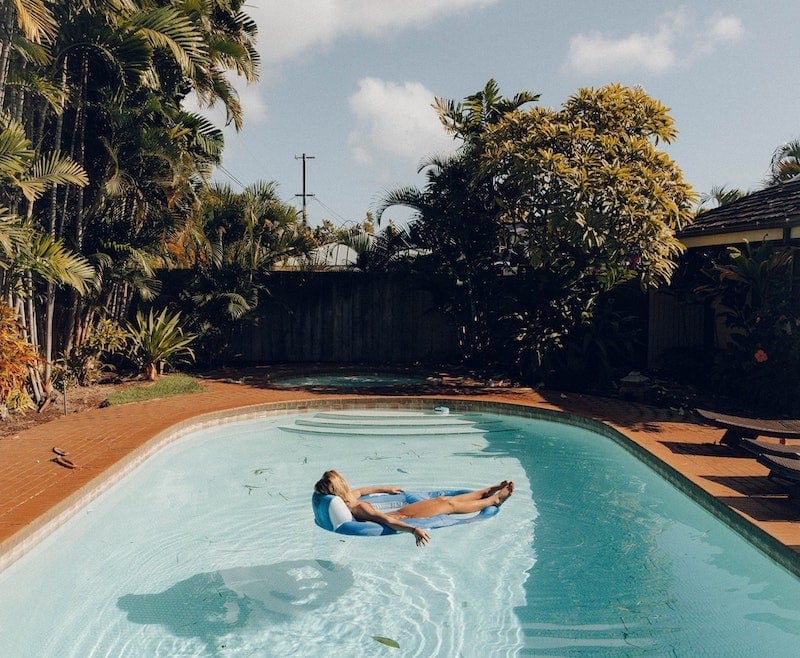2 Different Types of Swimming Pool Bugs (With Pictures)
-
Pete Ortiz
- Last updated:

There are many types of bugs that can invade your pool during the swimming season. Japanese beetles are prevalent in some areas, as are the springtail bug. Caterpillars, spiders, grasshoppers, and bees commonly find their way into the water by accident. Two kinds of insects will actively seek out your swimming pool, though, and those are the ones we are going to talk about now.
Join us while we take an in-depth look at the water boatman bug as well as backswimmer bugs to see how they get into your pool, what they do while they are there, and what you can do to prevent them. We also include a short guide where we add some tips to keep all types of bugs from getting in your pool.
 The Two Different Types of Swimming Pool Bugs
The Two Different Types of Swimming Pool Bugs
1. Water Boatmen

Water boatmen are the first type of water bug we’ll discuss because these are usually the first to arrive in your pool. This bug is long and slender with an oval shape. They are dark-colored and flat, with parallel crosslines across their back. Water boatmen fly at night, and artificial light will attract them. Once they end up in your pool, they can spawn, but they do not bite.
Besides being unsightly to swim with, the biggest problem that the water boatmen pose is that they attract the backswimmer bug.
- Long and slender
- Oval shape
- Dark color
- Parallel crosslines on back
- Don’t bite
2. Backswimmer Bugs

The backswimmer bug is the second type of bug that we need to discuss, and this water bug is attracted to your pool by the water boatmen bug. At a glance, the backswimmer looks similar to the water boatmen, but on closer examination, there are several differences between the two. The first noticeable difference is that as the name suggests, backswimmers can swim on their backs. These insects are also aggressive and can give a painful bite. These bugs can also spawn in your pool and will hide under the ladder and liner cover.
The backswimmer bug lacks the crosslines present in the water boatmen, and they are lighter in color. They have fringed hind legs to help with swimming and a long narrow body.
- Long and slender
- Oval shape
- No crosslines
- Light-colored
- Painful bite
Prevention Tips
It’s usually easier to prevent the water bugs from getting into your pool in the first place than it is to get rid of them after the fact. We have designed a shortlist of tips that will help you do just that.

- Keep plants away from the pool. Many bugs, including the water boatmen, feed on plants. They can also nest on the leaves. If you have a lot of foliage around your pool, you will get more bugs.
- Make sure the soil is well-drained. Slugs, mosquitos, and springtail bugs all thrive and spawn in soil that has poor drainage.
- Remove standing water. Just like poorly drained soil, mosquitos and sprigtail bugs will thrive and spawn in the untreated water. As more and more bugs fly around, more will wind up in your pool.
- Keep lighting away from your pool or use low-powered lights. Many different bugs, including moths, are attracted to light. Many people like to use a lot of lighting for safety reasons, but this can adversely lead to more bugs in your pool. Also, bug lights can confuse bugs and cause them to fly into your pool by accident. We recommend using very low-watt bulbs if the lighting is necessary and using motion sensor lights with a quick shutoff when possible.
- Keep pool chemical levels correct. While keeping the chemicals at their proper level won’t help prevent bugs from getting in the pool, but it can help stop them from breeding and will quickly kill most bugs and the germs they may be spreading.
- Remove all debris from the pool. The water boatmen will use any debris in your pool as food. Leaves and pollen can prove very inviting to these bugs as well as several others.
- Use a filter with a powerful pump. Bugs prefer stagnant water to moving water, so the more motion you can create with your pump and filter system, the less comfortable it will be for invading insects, and they may move on to a more stagnant body of water.
- Use a pool cover. There are many lightweight pool covers and netting style pool Covers that you can throw on when you’re not using the pool to keep bugs out.
Conclusion
Bugs can get into your pool in many ways, and there’s very little you can do about it except to clean them out. The tips we have outlined here will help reduce the number of bugs in your water, but they will not eliminate them completely. Using a cover is probably the most effective way to reduce bugs in your pool.
Learn to identify boatmen bug because it can alert you that the backswimmer bug is on the way. Learn to identify the backswimmer bug as it can give a severe bite. If you have enjoyed reading this article and learn something new, please share these different types of swimming pool bugs on Facebook and Twitter.
Featured image credit: ddzphoto, Pixabay
Contents

 The Two Different Types of Swimming Pool Bugs
The Two Different Types of Swimming Pool Bugs